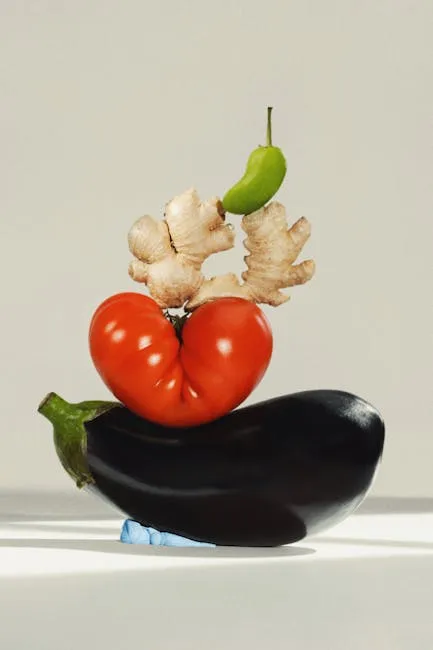Maitake Mushroom Cost: What to Expect

Maitake Mushroom Cost: A Comprehensive Guide
Maitake mushrooms, scientifically known as Grifola frondosa, are prized both for their culinary uses and their purported health benefits. Often referred to as “Hen of the Woods” due to their feathery appearance resembling a ruffled hen, maitake mushrooms possess a unique earthy flavor and texture that elevates various dishes. However, the cost of maitake mushrooms can fluctuate significantly depending on several factors. This comprehensive guide will delve into the details surrounding maitake mushroom costs, explore the factors influencing prices, and provide insights into where to find the best deals.
Factors Influencing Maitake Mushroom Cost

Several key elements contribute to the fluctuating prices of maitake mushrooms. These factors impact the supply chain, availability, and ultimately, the price consumers pay. Understanding these variables is crucial for making informed purchasing decisions.
1. Cultivation Method: Wild vs. Cultivated
The most significant factor affecting maitake mushroom cost is whether they are wild-harvested or cultivated.
2. Seasonality and Availability
As mentioned earlier, seasonality plays a pivotal role, particularly for wild maitake mushrooms.
3. Grade and Quality
The grade and quality of the maitake mushrooms also influence their price. Higher-grade mushrooms will usually cost more.
4. Location and Distribution
The geographic location of the buyer and the efficiency of the distribution network also affect the final cost.
5. Organic Certification
Organic certification indicates that the mushrooms were grown without the use of synthetic pesticides, herbicides, or fertilizers. Organic maitake mushrooms typically command a higher price due to the increased production costs and rigorous certification process required. Many consumers are willing to pay a premium for organic products, believing they are healthier and more environmentally friendly.
Typical Maitake Mushroom Costs
Given the factors mentioned above, it’s important to understand the typical price ranges you can expect to encounter when purchasing maitake mushrooms.
Fresh Maitake Mushrooms
Dried Maitake Mushrooms
Dried maitake mushrooms offer a longer shelf life and concentrated flavor.
Maitake Mushroom Supplements
Maitake mushrooms are also available in supplement form, including capsules, powders, and extracts.
Price Table: Maitake Mushroom Products
| Product Type | Typical Price Range | Notes |
|---|---|---|
| :———————– | :——————————— | :———————————————————————— |
| Fresh Maitake (Cultivated) | \$15 – \$30 per pound | Prices vary based on retailer, location, and seasonality. |
| Fresh Maitake (Wild) | \$25 – \$40 per pound | Higher prices due to scarcity and harvesting challenges. |
| Dried Maitake | \$6 – \$20 per ounce | Offers longer shelf life and concentrated flavor. |
| Maitake Capsules | \$15 – \$40 per bottle (60-120 caps) | Varies based on potency and brand. |
| Maitake Powder | \$10 – \$30 per ounce | Can be added to various dishes or beverages. |
| Maitake Extract | \$15 – \$50 per fluid ounce | Concentrated dose of maitake mushroom compounds. |
Where to Buy Maitake Mushrooms
Maitake mushrooms can be found at various locations, each offering different advantages in terms of price, selection, and convenience.
1. Grocery Stores
Many larger grocery store chains carry cultivated maitake mushrooms, particularly in the produce section or near other specialty mushrooms. While prices might be slightly higher compared to other sources, grocery stores offer the convenience of one-stop shopping. Check stores like Whole Foods Market, Trader Joe’s, and specialty produce sections in your local supermarket.
2. Farmers’ Markets
Farmers’ markets are excellent sources for fresh, locally grown produce, including maitake mushrooms. You can often find better prices and support local farmers by purchasing directly from them. Farmers can provide valuable insights into their cultivation practices and the best ways to prepare and enjoy their mushrooms.
3. Specialty Food Stores
Specialty food stores and gourmet shops often carry a wider variety of maitake mushrooms, including both cultivated and wild-harvested varieties. These stores typically focus on high-quality ingredients and may offer unique or hard-to-find products. However, prices can be higher compared to grocery stores or farmers’ markets.
4. Online Retailers
Online retailers offer the most extensive selection of maitake mushrooms, including fresh, dried, and supplement forms. You can compare prices from different vendors and have the products delivered directly to your door. Popular online retailers include Amazon, Etsy (for smaller growers), and specialized mushroom suppliers.
5. Asian Markets
Asian markets often carry a variety of exotic mushrooms, including maitake. Prices can be competitive, and you might find unique preparations or varieties not available elsewhere. If you live near a large Asian market, it’s worth checking their produce section for fresh or dried maitake mushrooms.
6. Mushroom Farms
If you live near a mushroom farm that cultivates maitake mushrooms, you can purchase directly from them. This often results in the freshest product at the best price. Contact local agricultural extensions or search online to find mushroom farms in your area. Purchasing directly supports local businesses and reduces the environmental impact of transportation.
Tips for Saving Money on Maitake Mushrooms
While maitake mushrooms can be relatively expensive, there are several strategies you can employ to save money.
The Value of Maitake Mushrooms: Are They Worth the Cost?
Despite the potential expense, many people consider maitake mushrooms to be worth the cost due to their unique flavor, culinary versatility, and potential health benefits.
Culinary Uses
Maitake mushrooms have a rich, earthy flavor and a distinctive texture that adds depth and complexity to various dishes. They can be sautéed, grilled, roasted, or added to soups, stews, and stir-fries. Their delicate flavor pairs well with a wide range of ingredients, including meats, vegetables, and grains.
Potential Health Benefits
Maitake mushrooms are rich in nutrients and bioactive compounds, including beta-glucans, which have been linked to immune-boosting properties. Some studies suggest that maitake mushrooms may also have anti-cancer, anti-diabetic, and cholesterol-lowering effects. While more research is needed, the potential health benefits of maitake mushrooms make them a valuable addition to a healthy diet.
Here’s a sample Maitake mushroom supplement you might want to consider:

View Product
Overall Value
The value of maitake mushrooms ultimately depends on individual preferences and priorities. If you appreciate their unique flavor and culinary versatility and are interested in their potential health benefits, they can be a worthwhile investment. By following the tips outlined in this guide, you can find ways to save money and enjoy maitake mushrooms without breaking the bank.
In conclusion, the cost of maitake mushrooms is influenced by various factors, including the cultivation method, seasonality, quality, location, and organic certification. By understanding these factors and employing savvy purchasing strategies, you can enjoy this delicious and nutritious mushroom without overspending. Whether you’re a seasoned mushroom enthusiast or new to the world of fungi, maitake mushrooms offer a unique and rewarding culinary experience.
Maitake Mushroom Cost: Exploring Pricing Factors and Value
Maitake mushrooms, scientifically known as Grifola frondosa, represent a sought-after culinary and medicinal ingredient. Understanding the various factors influencing their cost can assist consumers in making informed purchasing decisions. We will explore the different elements contributing to maitake mushroom prices, helping you navigate the market effectively and secure the best possible value for your money. Additionally, this section will delve into the forms they are available in and how that affects their price.
Unveiling the Factors Behind Maitake Mushroom Prices
Several key elements play a significant role in determining the price of maitake mushrooms. Consequently, consumers need to be aware of these factors to gauge the fairness and competitiveness of the market. These encompass availability, origin, demand, and the form in which they are sold.
Cultivation Method: Wild vs. Cultivated
The origin of maitake mushrooms significantly impacts their cost. Wild-harvested maitake mushrooms are generally more expensive than their cultivated counterparts. Wild maitake mushrooms are scarcer and require skilled foragers to locate them, adding to the labor cost. Furthermore, weather conditions and seasonal availability affect the supply of wild mushrooms, creating price fluctuations. Cultivated maitake mushrooms, on the other hand, are grown in controlled environments, enabling consistent production and lower prices.
Freshness and Quality
The freshness and overall quality of the maitake mushrooms directly influence their price. Freshly harvested mushrooms with a firm texture, earthy aroma, and no signs of spoilage command higher prices. High-quality maitake mushrooms also boast a richer flavor profile and superior nutritional content. Consumers should inspect the mushrooms carefully before purchasing, ensuring they are free from blemishes, discoloration, or excessive moisture.
Form: Fresh, Dried, or Powdered
Maitake mushrooms are available in various forms, each with its own pricing structure. Fresh maitake mushrooms typically command the highest prices due to their perishable nature and need for immediate consumption. Dried maitake mushrooms are more affordable and offer a longer shelf life. Powdered maitake mushrooms represent the most cost-effective option for incorporating the mushroom’s health benefits into supplements and culinary applications.
It is worth noting that many people prefer to consume the benefits of maitake mushrooms in the form of supplements.
View Product-(60-capsules-30-servings)-Nootropic-Brain-Booster-i.202321183.4251327469)

View Product
Supplier and Location
The supplier and geographical location significantly influence maitake mushroom prices. Specialty grocery stores and farmers’ markets often charge higher prices compared to larger chain supermarkets due to their focus on quality and sourcing from local farms. Urban areas may experience higher prices compared to rural locations due to increased operating costs and transportation expenses. Online retailers also offer a wide range of maitake mushroom options, with prices varying depending on shipping costs and supplier markups.
Organic Certification
Organic certification adds a premium to the price of maitake mushrooms. Certified organic maitake mushrooms are grown without the use of synthetic pesticides, herbicides, or fertilizers. Organic farming practices prioritize soil health and biodiversity, resulting in a more sustainable and environmentally friendly product. Consumers who value organic production methods are willing to pay a higher price for certified organic maitake mushrooms.
Dissecting the Cost: Forms and Their Respective Prices
Maitake mushrooms can be purchased in a variety of forms, each catering to different needs and preferences. These forms, including fresh, dried, capsules, and powders, significantly affect the overall cost. Therefore, consumers must consider their intended use and budget when selecting the most suitable form.
Fresh Maitake Mushrooms: A Premium Experience
Fresh maitake mushrooms offer the most authentic and flavorful culinary experience. However, they come with a higher price tag due to their perishable nature and limited availability. The price of fresh maitake mushrooms can vary significantly depending on the factors mentioned above, but generally, you can expect to pay between \$18 and \$36 per pound.
Dried Maitake Mushrooms: Shelf-Stable and Convenient
Dried maitake mushrooms provide a shelf-stable alternative to fresh mushrooms, offering convenience and versatility. The drying process concentrates the flavor, making them an excellent addition to soups, stews, and sauces. The price of dried maitake mushrooms is generally lower than fresh, ranging from \$15 to \$25 per pound. When purchasing dried mushrooms, ensure they are properly packaged and free from moisture.
Maitake Mushroom Capsules: A Convenient Supplement
Maitake mushroom capsules provide a convenient way to incorporate the mushroom’s health benefits into your daily routine. Capsules contain powdered maitake mushroom extract, offering a concentrated dose of beneficial compounds. The price of maitake mushroom capsules varies depending on the brand, dosage, and quantity, but generally ranges from \$20 to \$40 per bottle (typically containing 60-120 capsules).
View Product-Brain-Booster-Anxiety-Sleep-Supplement-i.202321183.8209281913)
Maitake Mushroom Powder: Versatile and Cost-Effective
Maitake mushroom powder represents the most cost-effective way to enjoy the mushroom’s health benefits. The powder can be easily added to smoothies, soups, stews, and other dishes. The price of maitake mushroom powder is typically lower than capsules, ranging from \$10 to \$20 per pound. When purchasing maitake mushroom powder, ensure it is sourced from a reputable supplier and stored in an airtight container.
Smart Shopping Strategies: Getting the Best Value for Your Money
Understanding the factors that influence maitake mushroom prices is the first step in making informed purchasing decisions. By implementing some smart shopping strategies, you can further optimize your budget and secure the best possible value.
Comparison Shopping
Before making a purchase, take the time to compare prices from different suppliers. Check local farmers’ markets, specialty grocery stores, chain supermarkets, and online retailers. Pay attention to the quality of the mushrooms, the form they are sold in, and any shipping costs or additional fees.
Buying in Bulk
If you regularly use maitake mushrooms, consider buying in bulk to save money. Dried and powdered maitake mushrooms are well-suited for bulk purchases due to their longer shelf life. However, ensure you have adequate storage space and that you can consume the mushrooms before they expire.
Seasonal Availability
The price of fresh maitake mushrooms may fluctuate depending on seasonal availability. During peak season, when the mushrooms are more abundant, prices tend to be lower. Check with your local farmers’ market or specialty grocery store to determine the best time to purchase fresh maitake mushrooms.
Consider Cultivated Options
If you are on a tight budget, opt for cultivated maitake mushrooms instead of wild-harvested ones. Cultivated mushrooms offer a similar flavor and nutritional profile at a significantly lower price.
Read Reviews
Before purchasing maitake mushroom capsules or powder, read reviews from other customers. This can provide valuable insights into the quality of the product and the reputation of the supplier.
Conclusion: Making Informed Choices
The cost of maitake mushrooms varies widely depending on factors such as origin, quality, form, supplier, and organic certification. By understanding these elements and employing smart shopping strategies, consumers can make informed purchasing decisions and enjoy the delicious flavor and health benefits of maitake mushrooms without breaking the bank.

